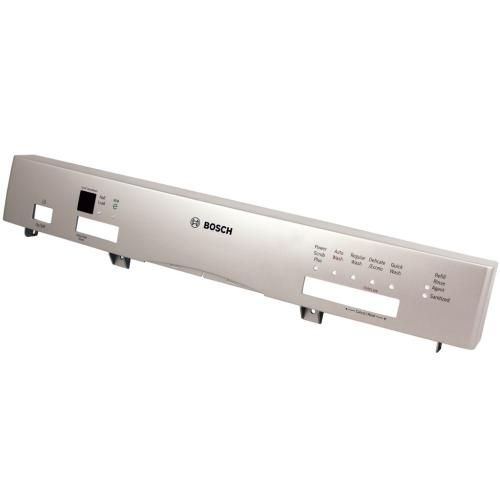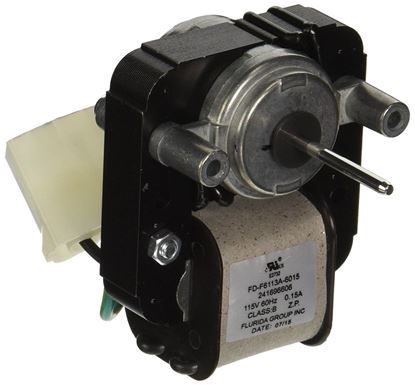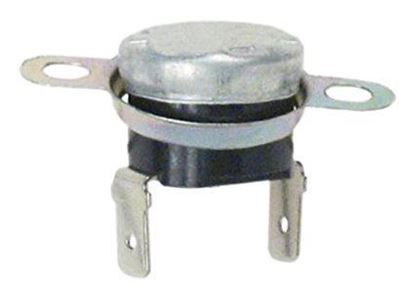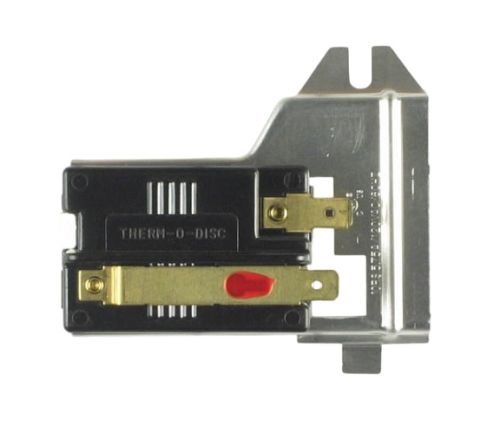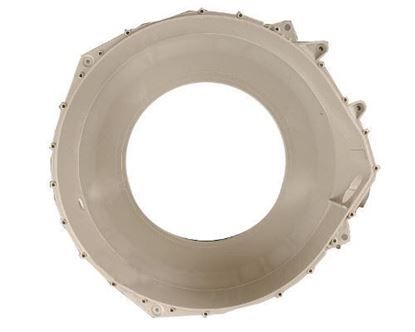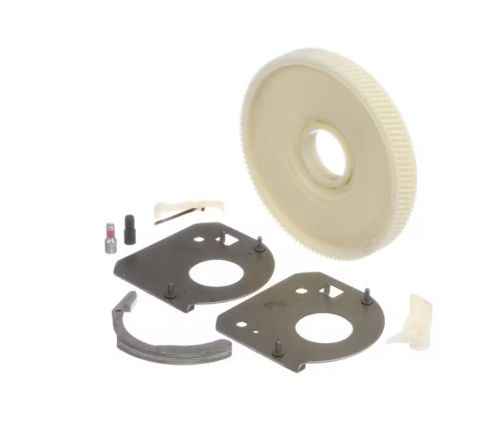
Common Washing Machine Issues and How to Solve Them
Washing machines have become an essential appliance in every household, making laundry tasks easier and more convenient. Just like any other machine, they can also encounter problems that can disrupt their normal function. Whether you own a front load or a top load washing machine, it's essential to know the most common washing machine faults and their solutions.
What happens when your washing machine not working properly? There are many models that can break down or need to be replaced. Common washing machine repairs can be costly; however, if you’re looking for the best way to save money, a great option is to buy new sets of washer parts and accessories online at HnKParts. You’ll find that they are cheaper than what you would find in a local store.
Read on to find out the Common Washing Machine Issues and Solutions , so you can effectively troubleshoot washing machine issues and keep your machine running smoothly while avoiding unnecessary expenses, including those associated with high repair costs. Whether you need help with top load washing machine troubleshooting or addressing issues with front load models, we have you covered.
Common washing machine problems and solutions
Here are the ten most common top load washing machine problems and solutions:
1. The washing machine leaking
One of the common washing machine faults homeowners encounter is a leaking washing machine.
This issue often arises due to worn door seals, loose hose connections, or even a malfunctioning water inlet valve. Thoroughly troubleshoot the washing machine by inspecting these areas to identify the source of the leak.
Be it a front load washing machine or top load one, a washing machine can leak due to various reasons, such as a damaged or worn out door seal, a clogged drain pump or hose, a malfunctioning water inlet valve, or a faulty water level sensor. Additionally, overloading the machine or using too much detergent can cause excessive sudsing, leading to leaks. It's essential to diagnose the source of the washing machine leaking accurately to determine the necessary repairs or replacements required to fix the issue. Let's start by fixing the washer's loose water line connection to the wall. Washing machine vibrations can loosen the hose. If you think your washing machine's leak is caused by a loose hose connection, tighten it. If that doesn't work, check the washers or seals. Washers rest on the water fill hose to conserve water. When washers lose their shape, water can leak through and cause a leak, so they must be replaced.
Finally, check your washing machine spare parts, such as a broken drain tube. Hoses usually last five years before needing to be replaced due to cracking, abrasions, and other damage. Replace rubber hoses with steel braided ones to prolong their life. Turn off the washer machine's power supply and either open the cabinet door or unscrew the rear access panel to inspect the hoses. A washer has many internal hoses, so check each one for wear and tear. Look for signs like rust or calcium deposits. If a hose is damaged, you must buy a new one. Don't worry—the process is simple.
2. Washing machine noisy when spinning
A washing machine that moves around during operation can be frustrating. This can often be linked to improper leveling or loading. Engage in top load washing machine troubleshooting by checking the level of your machine and redistributing clothes evenly inside the drum to reduce movement.
A noisy washing machine when spinning can be a frustrating problem to deal with. The issue could be caused by a variety of factors. It is important to address this issue promptly as prolonged use of a noisy washing machine can cause further damage and potentially lead to more expensive repairs. Vibration issues result in the washing machine noisy when spinning. Loud noises may be due to coins bouncing out of jeans' pockets. Sometimes these things pass through a cycle without a problem, but sometimes they get caught in your washing machine's drum.
It's easy to remove these items from the filter or sump hose. They rattle inside the drum sometimes. If the objects are in a drum, slowly rotate it until the item falls into the hose or filter. You can remove the obstruction, but it may take time. If a trapped object isn't the problem, the drum may be damaged or the motor may be broken. You may want to buy a new washing machine rather than hire a professional to fix these issues.
3. Washing machine moves around
One common issue with washing machines is that they may move around during operation. But it is well known that a washing machine moves around throughout the wash cycle. If it's loudly bouncing, something else may be wrong. This usually indicates a tilted washing machine base. Adjust the legs and use a bubble level to make sure it's set up correctly.
If the issue occurs rarely, your load may be uneven. When the machine vibrates loudly, stop it and check the drum for additional clothing. If that's the case, arrange the clothes and spread them out as evenly as possible. The suspension rods may break if leveling or load size are not the issue. Due to separation, your washing machine may shake occasionally. Broken suspension rods must be replaced by a technician.
4. Washing machine won’t spin or drain
If your washing machine won’t spin or drain, it might indicate a blockage in the drainage system or issues with the lid switch. This is a notable scenario for high efficiency washing machine problems. Carefully troubleshoot the washing machine to pinpoint the issue and restore its functionality.
When your washing machine is overloaded with clothes or linens, it won't spin or drain. Then if this happens, remove some items from it. In some cases, your washing machine won;t spin or durian due to a clogged drain pump. Something impaling the output pipe can stop water flow into and out of the machine.
A motor or control board may be broken if an unbalanced load or obstruction is not the issue. Inspect these parts with a multimeter and repair or replace them, remove the washer's panels. Belts, pumps, motors, and tubs can be replaced in washing machines. These parts are easy to replace and can extend the washer's life.
5. Washing machine won’t fill with water
A washing machine that won’t fill with water can stem from clogged water hoses or faulty inlet valves. Conduct washing machine troubleshooting to check these components and ensure water can flow into the machine properly.
In some cases, the water hose might be kinked, preventing the flow of water into the machine. If your washing machine won’t fill with water, start by inspecting the water hoses. If the washing machine is buzzing but not filling with water, check the taps because it may be trying to take in water but failing. Dirt can clog these, preventing water from flowing through the hose.
To fix the problem, turn off the faucets. If the hot tap is jammed, drain the hot water tank first. Unplug the hose and turn on the faucet to empty the tank. Water may be flowing through your hose but not filling your washer. Your water valve may be the problem. Cleaning the filter may be enough. If the Water Valve Filter is clean, the valve's connectivity may be the issue. If you don't know much about this, hire a technician.
6. Smell from washing machine
When only cold washes are used, a buildup of bacteria and filth may occur. These are the reasons for the smelly washing machine. Ignoring this issue may lead to further common washing machine faults and can affect the cleanliness of your laundry.
If not, try running it with this secure concoction of ingredients to remove smell from washing machine:
Baking soda, 1/4 cup
1/4 cup water
White vinegar, two cups
Here’s what to do for a smelly washing machine: Put the white vinegar in the washing machine's drum and the baking soda and water in the detergent drawer before starting a cycle on the high heat setting. Check your washing machine's filter if the odor remains. There may be a significant accumulation of clothing-related material in the drain trap filter.
Advice: Take out any freshly washed laundry as soon as possible to avoid offensive odors. When the washing machine isn't in use, leave the door open rather than shut to let moisture out.
7. Washer is ruining clothing
Do your clothes get holes after washing? Sorting clothes before washing and drying is one of the easiest ways to prevent holes. Delicate items should never be washed with bulky pants or clothing with zippers and studs. Zippers can catch silky, lacy, beaded, and sequined fabrics. Chlorine bleach may be the culprit. Holes can result from using too much bleach or not mixing it with water before applying it.
Consider spin cycle speeds. If the final spin setting is too high for the fabric, clothing can be dragged into the washer drum's tiny cracks and crevices, wearing down the fibers. Finally, overfilling the washer damages clothes. Overloading increases the risk of clothing getting caught in other clothes' buttons, zippers, and other embellishments. Zip, button, and inside-out clothes before washing.
8. Washing machine won’t turn on
Having a pile of laundry waiting to be washed and your washing machine not turning on can be frustrating. In most cases, a washing machine won't turn on or will stop mid-cycle when it doesn't have power. Check your washing machine spare parts, like the circuit breaker, first. If it trips every time you plug in the washer, you may need an electrician.
Possibly a blown fuse. If the appliance's lights work, it's not a fuse. Check the socket. After plugging something else in, it's the socket, not the washing machine.
9. Washer's door won't open
In a washing machine, the door doesn't open until the drum is full. If the door won't open, what then? Starting a new cycle in your washing machine will drain it and open the door. Next, check the filter and drain for clogs. Your washer may have overheated from too many loads. An overheated appliance can be plugged in and running, but the washer's door sensor won't open.
Overheating usually fixes itself. Before opening the door, let the appliance cool. The door switch or control board may be the problem if the door won't open even when there's no water in the tank. A technician must examine these inner workings.
10. Washer is clogged/won't drain
This is a prevalent issue in both front-load and high efficiency washing machine problems. Performing washing machine troubleshooting will help you identify the clog and resolve it effectively.
If your washing machine doesn't drain, it may have a blockage. Soap residue, dryer lint, items from pockets, grease, oils, and other materials on clothing can block a washing machine drain pipe. Start by cleaning the filter. Remove the washer's front filter. Blockages must be removed. Check the hoses if the filter is clear. First, manually drain the washer. Pull your washer from the wall and disconnect its power and hoses. Clear the hoses.
If your washing machine won't drain, manually clear the laundry drain. To do this, remove the drainage pipe from most washing machines' backs. After removing the washing machine unit's drainage pipe, remove another drain hose. This hose clogs the washing machine drains because it connects your laundry unit to your home plumbing system. After disconnecting this drain hose from the washing machine's drainage pipe, snake it like any other drain fixture. Snaking a washing machine drain is explained here.
After these steps, run a short wash/rinse cycle. After removing the block, you'll be back in business. If it doesn't, the block hasn't been cleared or there's a more serious issue that requires a technician.
Know about How to install a washing machine.
Tips for preventing washing machine problems
Washing machines simplify laundry tasks, but neglecting maintenance can lead to costly repairs. Regular care helps extend their lifespan and ensures optimal performance
|
Aspect |
Maintenance and Safety Tips |
|
Routine Cleaning |
Clean lamp surfaces regularly with a soft, damp cloth. Ensure lamps are turned off and cooled before cleaning. |
|
Inspection for Damage |
Check for cracks, frayed cords, or burnt-out bulbs. Address issues immediately for safety and performance. |
|
Bulb Replacement |
Follow the manufacturer's recommended schedule to replace bulbs and maintain consistent lighting. |
|
Waterproof Fixtures |
Use waterproof or moisture-resistant fixtures to prevent electrical failures in humid environments. |
|
Proper Wiring Practices |
Ensure wiring is secure and dry. Avoid running cords near water; use GFCI outlets to reduce electrical shock risks. |
A malfunctioning washing machine can be a frustrating experience for any homeowner. However, by identifying and addressing the common washing machine faults listed above, you can effectively troubleshoot washing machine issues, avoiding costly repairs and extending the lifespan of your appliance.
Whether you are facing high efficiency washing machine problems or specific issues with top load washing machine troubleshooting, taking proactive steps will help you manage washing machine troubleshooting effectively. By staying vigilant and addressing common washing machine repairs promptly, you can keep your washing machine running smoothly and avoid situations where your washing machine not working properly becomes a major concern. Regular maintenance, careful usage, and timely repairs are essential for ensuring that your washing machine operates efficiently and effectively for years to come.
FAQs
What are common issues with front load washers?
Common issues with front load washers include door seal leaks, clogged drain pumps, and excessive vibration.
What is the most common washing machine failure?
The most common washing machine failure is a faulty drain pump, causing water drainage issues.
Can a washing machine leak if overloaded?
Yes, a washing machine can leak if overloaded, as excess weight can strain the door seal and cause water to escape.
How many years should a washing machine last?
The average lifespan of a washing machine is around 10-15 years.
How often should I clean my washing machine's filter?
According to the manufacturer, your washing machine's filter should be cleaned for every 3-6 months, depending on the amount of use. It is best to refer to the manufacturer's instructions for specific guidance.


